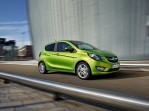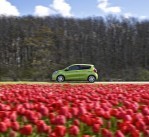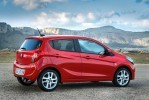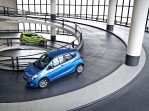Body style: Hatchback
Segment: Compact
Production years: 2015, 2016, 2017, 2018, 2019
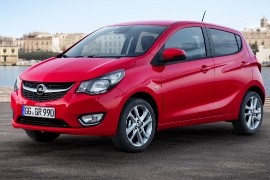 30 Photos
30 PhotosAfter Opel Agila was withdrawn from the market, the German car-maker needed a vehicle to compete in the super-mini and affordable vehicles. And the answer was the Karl in 2015.
When the Daewoo brand filed for bankruptcy, it was acquired by GM, its platforms were included in the package. The Korean brand already had some projects in advanced stages or ready for production. GM took advantage of that and it started to build those models as Chevrolet vehicles. After the world economic crisis happened, the bow-tie brand was withdrawn from Europe and Opel remained their only option. One specific model was the Chevrolet Spark and that was rebranded as Opel Karl.
The short and tall vehicle was built to compete in the supermini segment against likes of Citroen C1 or Volkswagen up! With its big, Corsa-style, headlights, short hood, and tall greenhouse, the Karl was able to fit five adults inside and carry them around town. It also featured economical engines, fit for crowded cities.
Inside, the Karl was offered a driver-oriented dashboard and it could feature an infotainment unit fitted with the Opel InteliLink system that allowed connectivity with Apple CarPlay and Android Auto. The instrument cluster showed two large dials carried over from the Corsa. The steering wheel was taken from the same model as well.
For the powertrain, the Karl offered only one option: a three-cylinder 1.0-liter engine mated to a 5-speed manual. For the suspension, the front was based on McPherson struts and a twisting beam in the rear. After all, it was an affordable car, under Euro 10.000.
OPEL Karl 2015, 2016, 2017, 2018, 2019
- 1.0L Ecotec 5MT (75 HP)
OPEL Karl
1.0L Ecotec 5MT (75 HP)
ENGINE SPECS - 1.0L Ecotec 5MT (75 HP) | |
|---|---|
| Cylinders: | L3 |
| Displacement: | 999 cm3 |
| Power: | 55 KW @ 6500 RPM 75 HP @ 6500 RPM 74 BHP @ 6500 RPM |
| Torque: | 71 lb-ft @ 4500 RPM 96 Nm @ 4500 RPM |
| Fuel System: | Direct Injection |
| Fuel: | Gasoline |
PERFORMANCE SPECS | |
|---|---|
| Top Speed: | 106 mph (171 km/h) |
| Acceleration 0-62 Mph (0-100 kph): | 13.9 s |
TRANSMISSION SPECS | |
|---|---|
| Drive Type: | Front Wheel Drive |
| Gearbox: | 5-speed manual |
BRAKES SPECS | |
|---|---|
| Front: | Ventilated Discs |
| Rear: | Drums |
TIRES SPECS | |
|---|---|
| Tire Size: | 165/65 R14 |
DIMENSIONS | |
|---|---|
| Length: | 144.7 in (3675 mm) |
| Width: | 66.9 in (1699 mm) |
| Height: | 58.1 in (1476 mm) |
| Front/rear Track: | 55.5/55.8 in (1,410/1,417 mm) |
| Wheelbase: | 93.9 in (2385 mm) |
| Cargo Volume: | 7.3 cuFT (207 L) |
WEIGHT SPECS | |
|---|---|
| Unladen Weight: | 2070 lbs (939 kg) |
| Gross Weight Limit: | 2983 lbs (1353 kg) |
FUEL ECONOMY (NEDC) | |
|---|---|
| City: | 42 mpg US (5.6 L/100Km) |
| Highway: | 60.3 mpg US (3.9 L/100Km) |
| Combined: | 52.3 mpg US (4.5 L/100Km) |
| CO2 Emissions: | 104 g/km |
